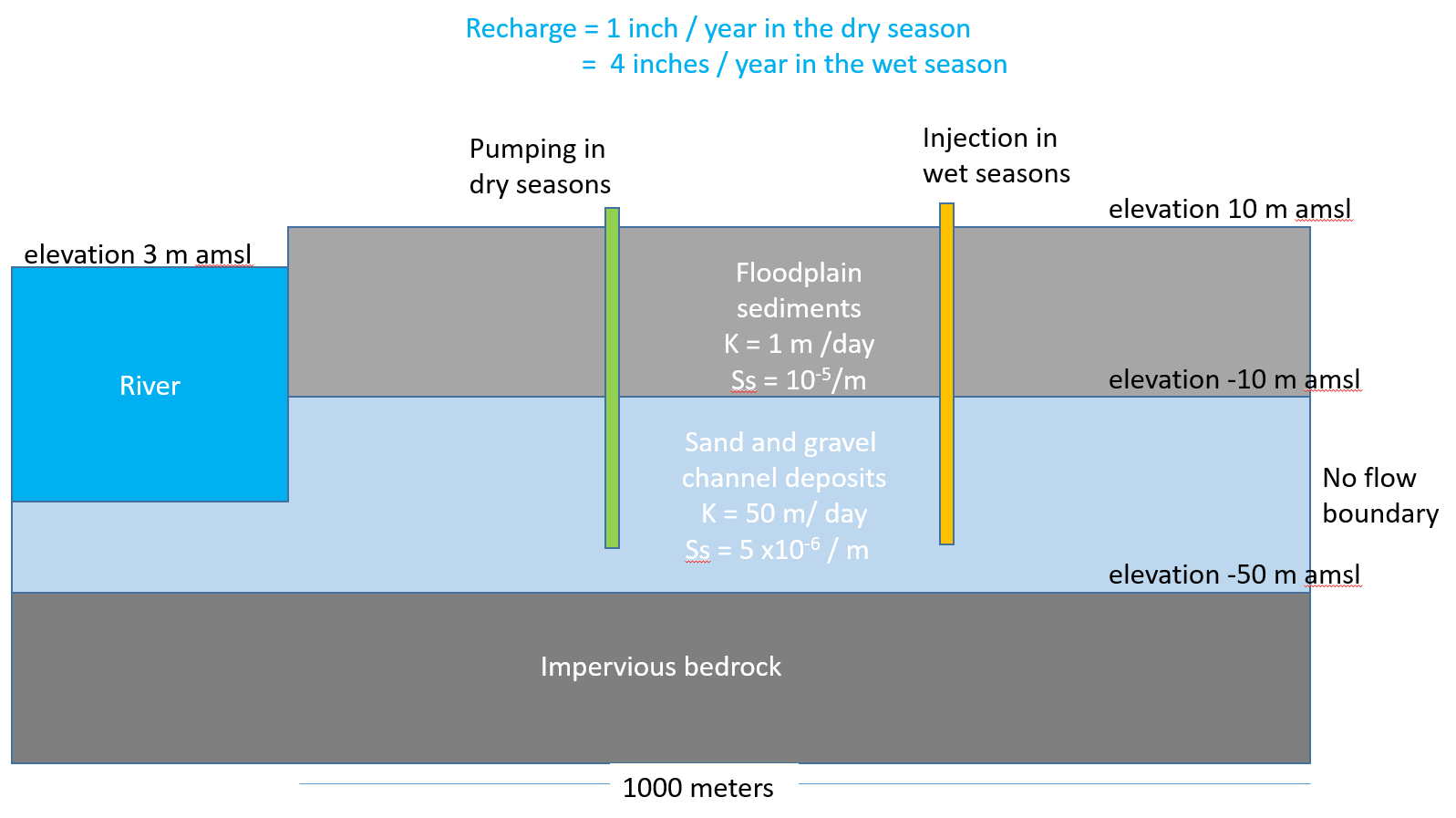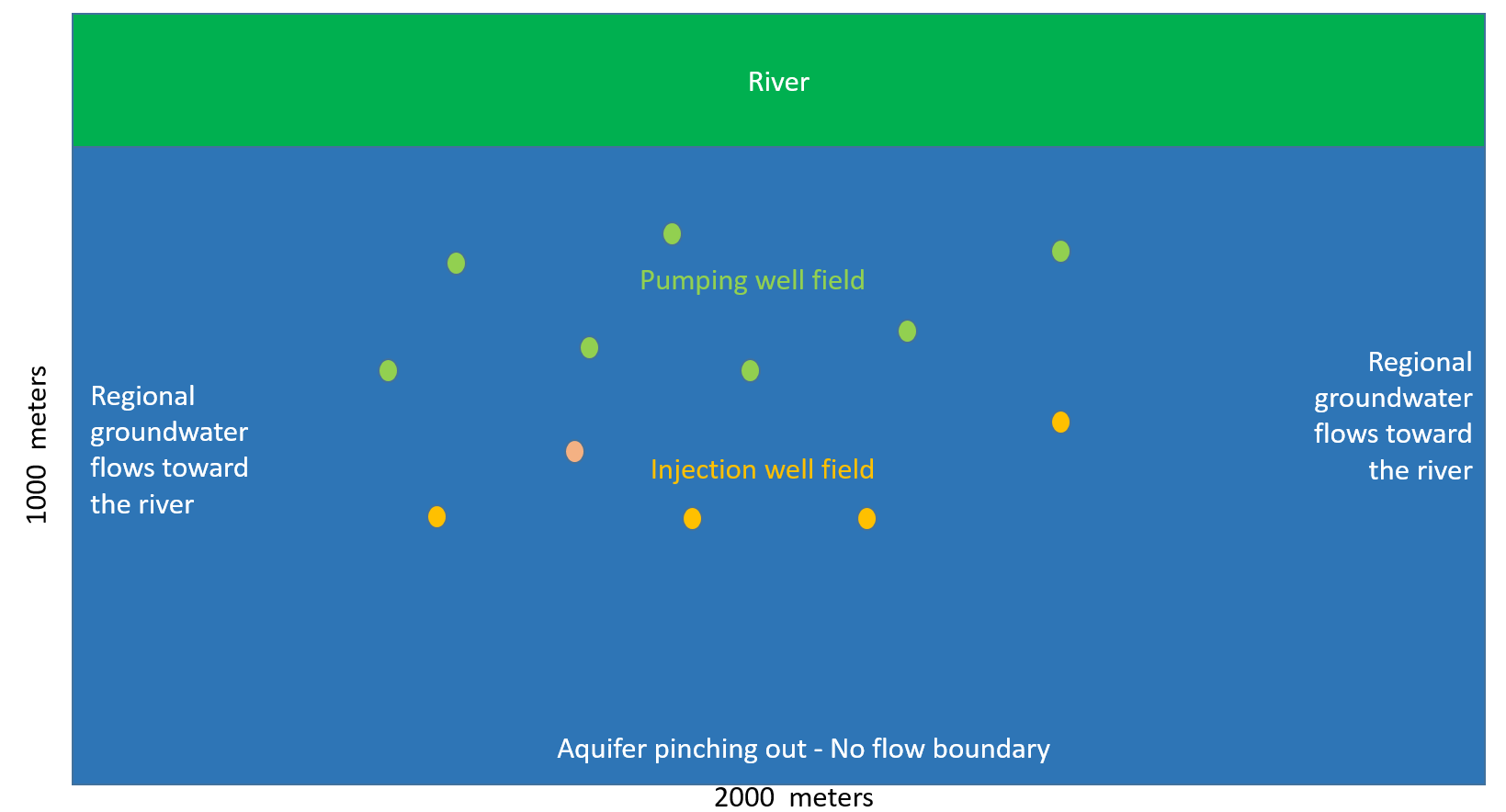Artificial recharge is possible through injection wells after rainfall events for groundwater storage and recovery purposes. In general, these wells help to place surface water into the groundwater storage over short durations to avoid evaporation losses. These wells have additional uses such as waste disposal, oil production enhancement, mining, and salt water intrusion prevention through wells. For example, they can be used as a way to control saline water upconing in the coastal aquifers, stopping the advancement of salt water inland and also stabilizing the interface between the fresh and salt waters.
Use MAGNET to assess the effectiveness of the following Aquifer Storage and Recovery (ASR) project. In particular, simulate and compare the aquifer drawdown in the dry season with and without artificial well injection during the wet season.
The specific situation:
A city use surface water for drinking water supplies in wet seasons (Winter, fall, and spring) and use groundwater in dry seasons (summer) from a well field of 10 pumping wells. Each supply well pumps 1000 gpm continuously during the dry seasons. The well field is screened in a confined sand stone aquifer that is well connected to a major river


MAGNET/Modeling Hints:
- Use ‘Synthetic mode’ in MAGNET to create a model domain with the same dimensions as shown in the map
- Overlay the provided SiteMap image file included in the problem description. Choose ‘Use Domain Extent’ to fit the image to the established domain size.
- Conceptualize the model as 2-layer aquifer system. Conceptualize the River as a constant head zone feature that fully penetrates both aquifer layers
- The lateral and bottom boundaries can be treated the domain boundaries as ‘no-flow’ boundaries.